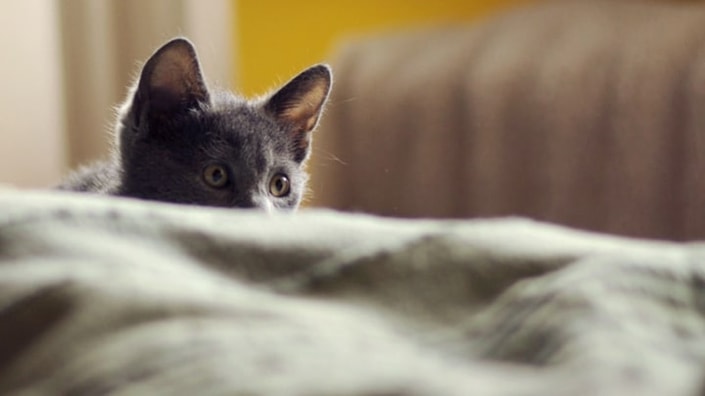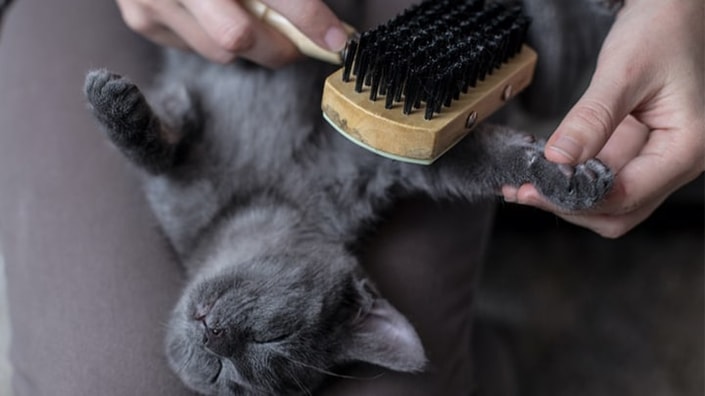KITTEN CARE GUIDE: HOW TO RAISE YOUR KITTEN RIGHT
It’s no secret: Kittens are simply the cutest. If you’re planning to get one (or just got one), there’s no time like the present to learn how to cater to their needs. Here’s everything you need to know about raising your kitten to be a sophisticated, well-mannered adult cat.
Feeding your kitten
Kittens have different nutritional needs than adult cats, so check the label to be sure the food you’re buying is designed for growth (or all life stages) to meet their nutritional needs. And since kittens are made of energy, make sure to free feed (i.e., let them choose how much to eat) until they’re around 6 months old.
Once kittens reach the one-year mark, they’re usually done growing. While the right time to start feeding your kitten adult food depends on a few different factors, you should make the switch when your kitten is 10 to 12 months old.
When it’s time to transition to adult food, you may be wondering: wet food or dry food? Wet food — like DINE® Classic Collection — has a high amount of moisture, which can help your kitten stay hydrated once they start eating adult food. Our delectable recipes will also refine your kitten’s palate for a lifetime of culinary appreciation.
Creating and keeping schedules
To prevent your kitten from overeating, adopt a feeding schedule in which your kitten eats three to five times a day. (Morning, afternoon and evening feedings are often a good option.) If you’re not sure how much to feed your kitten at each meal, use the feeding guidelines on the label or ask your vet for advice. Just remember: If you’re feeding your kitten wet food, don’t leave it out for longer than 30 minutes.
And let’s not forget about your feline’s favorite activity: sleeping. Kittens and cats are crepuscular, which is a fancy way of saying they’re most active at dawn and dusk. If you’d prefer to get your beauty sleep without interruptions from your kitten, you’ll need to adjust their schedule.
Playing active games with your kitten during the day can help them expend some energy so they sleep better at night. You can also establish a bedtime routine (that may not be too different from your own). Feed your cat a filling dinner before bed, keep the lights low and provide a soft and safe spot to rest. Perhaps the most important thing to remember when setting a sleeping or feeding schedule is that consistency is key.

Bringing your kitten home
You’re going to be your kitten’s new caregiver, so it’s wise to establish a bond right away. Ease into the transition by playing with them in their familiar environment before you take them home.
When you get home, place your kitten in a smaller, quieter room, and don’t force them out of their carrier. Instead, let them come and go so they can get used to their new space.
When you feel like they’re ready to venture outside of this room, introduce new spaces one at a time, and stay close by.
If you have other pets, keep in mind that they might feel territorial when meeting the new kitten. Make sure to hold your cat on your lap or keep your dog on a leash when introducing them to the new kitten for the first time.
Playtime and enrichment
Your kitten craves interactive play that mimics the instincts they’re born with, like stalking and hunting. Plus, those activities help with proper muscular development. When you play with your new kitten, try using wands and movable toys — anything that encourages their natural instincts.
In addition to toys and interactive play, your kitten may enjoy a cat scratcher or tree, or even empty paper bags or crumpled-up wrapping paper. The best part is, you don’t have to spend a lot to entertain your kitten. Items you already have lying around — like cardboard boxes or empty plastic storage containers — are often what kittens end up loving the most.

Grooming and bonding
Pampering your kitten with grooming sessions can be a great way for the two of you to bond. Brushing can help remove knots and make your kitten’s coat shine. It also gets rid of hair that may otherwise lead to unsightly hairballs.
Another great opportunity for bonding is when you’re feeding your kitten. Cats are always most interested when you have something they like, especially when that something is their favourite DINE® meal or treat. We’d recommend DINE® Creamy Treats for a magnetic moment of connection with your cat. Simply snap, peel and serve for a special moment you can enjoy together.
You’ll also need to get into the habit of giving your cat a manicure — that is, clipping their nails. Starting this routine with your kitten will help you in the long run. To trim their nails, gently push the pad around the nail and only cut the clear part. The pinkish part of the nail is called the quick, and cutting it may earn you a scratch!
Likewise, starting a teeth-brushing habit early on will help your kitty get used to it, and soon it will become a no-fuss part of your routine.
Placeholder for the 'Salesforce Datalayer Tag Block' field
